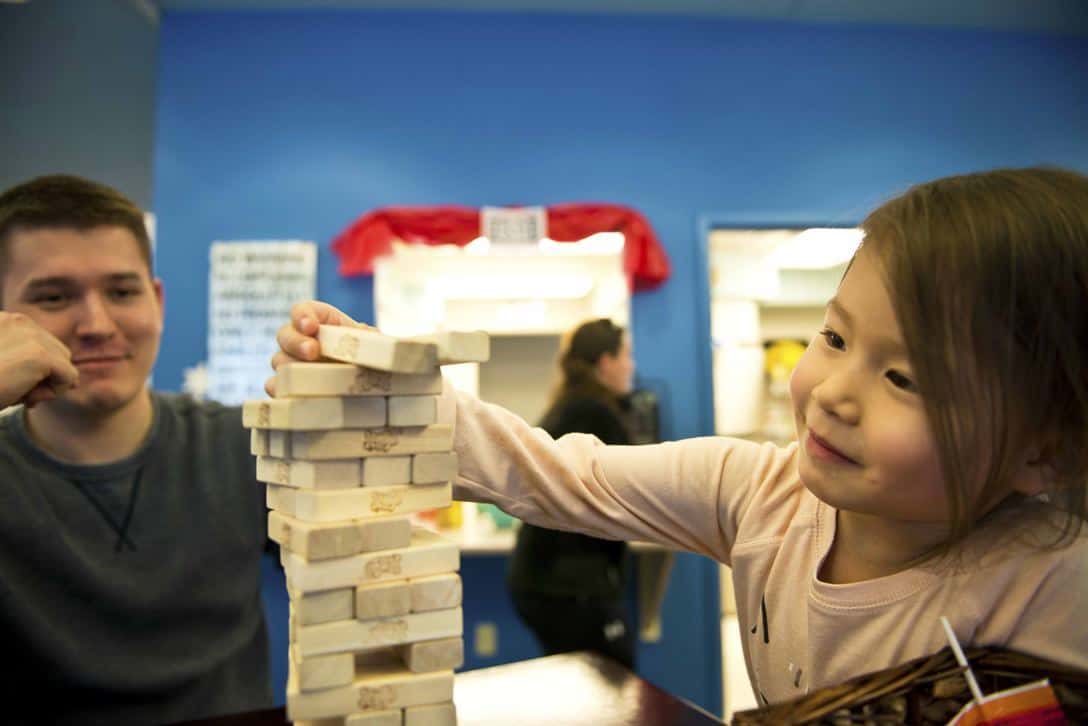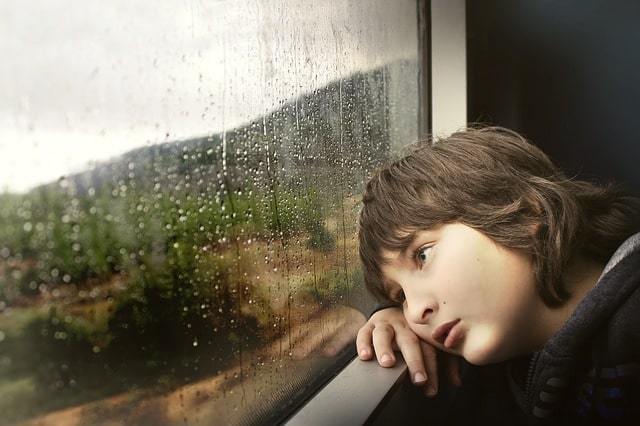Depression is usually associated with adults. The thought of a child being depressed is something that seems unimaginable to parents and caregivers, as depression seems like something that develops as a result of not having the tools to cope with long periods of sadness and feelings of hopelessness.
Studies continue to show, however, that children of all ages can meet the criteria for a depression diagnosis if they have persistent symptoms of sadness that impact their ability to function in their academic, social, and family lives.
While depression and sadness are not synonymous, persistent sadness and the symptoms that come with it will determine if your child is experiencing a depressive episode instead of a typical bout of sadness.
Sadness looks different for everyone. For some, they will cry a lot and have difficulty stopping. Others may seem withdrawn and refuse to do things they used to enjoy doing. Some may become irritable and engage in angry outbursts and tantrum behavior.
Self-deprecating statements and being extremely hard on themselves is another possible expression of sadness. Some even express their sadness in the form of physical pain like headaches, stomach aches, or complaints of other illness.
Let’s discuss how to know when your child’s behaviors are typical expressions of sadness and when they may be moving toward depression, which may need professional treatment.
Table of Contents
What’s Normal and What’s Not?
Sadness is a common emotion that children experience, for a variety of reasons. Sadness, like any emotion, has been maintained throughout the evolutionary history of human beings for a reason.
Psychologists and researchers have long looked into the functions of our various negative emotions and have found that each one serves a purpose of either protection, learning, or growth.
Sadness, for example, is said to help people develop the ability to discern what is acceptable and unacceptable to them, to motivate someone to change the circumstances creating their sadness, to improve their ability to communicate their needs, and to learn and develop better judgment and awareness in life.[1]
Sadness even helps people develop creativity.[2]These are all skills that parents want their children to develop, but seeing our kids sad is difficult. We all want to be happy and emotionally healthy, and we want this even more for our children.
Then, our inclination is to alleviate our children’s sad feelings any way we can. Sometimes, the better strategy is actually to help them work through their sadness instead of around it.
But what sad feelings should a child be able to work through on their own (or with the help of a parent), and what sad feelings are more persistent and problematic, that may require the help of a professional?
Normal Sadness in Childhood
The following symptoms of sadness are considered developmentally appropriate for children:
- Tearfulness and crying that is short in duration and connected to a sad/disappointing event or situation. For example, a child may cry when disappointed about not being able to get a toy at the grocery store, but they are able to calm down once they leave the store.
- Wanting to be alone, withdrawing briefly from social interaction when in a sad mood. For instance, a child who withdraws to their room when they are upset about a situation involving siblings or parents, but they are able to return for dinner.
- Irritability and some tantrum behaviors (yelling, screaming, throwing self on floor, whining, etc.) that are short in duration and connected to feeling sadness or disappointment, Some kids express sadness with anger. For example, a parent tells a child they need to go to bed and removes screen time privileges. The child may be sad, but react with a tantrum. In these situations, once the trigger is no longer a concern, they should be able to recover without much difficulty.
- Not wanting to participate in fun or exciting activities during periods of a sad mood. In the moment when a child is disappointed or upset, they may refuse to continue playing in a sports game when they got “out.” That’s typical for children.
- Infrequent expressions of frustration or making self-deprecating statements as a result of feeling upset with themselves. Some children will say things like, “I am a bad kid,” or “I can’t do anything right!” when they are frustrated and sad about their behavior.
- Appearing tired or lethargic during times of sadness. Often, if children are expressing any of the above symptoms of sadness, it may be accompanied with a time afterward where they seem more tired and may need to rest in order to help them recuperate.
**Note: While these are considered typical patterns of behavior in children, using the tips in the “How Can I Help My Child?” section below can help to improve their ability to express their sadness appropriately.
Childhood Sadness that May Require Professional Assistance
The following is a list of depressive behaviors — they’re more persistent and affect a child’s overall functioning. If your child has experienced some, or all, of these symptoms for longer than two weeks, you may benefit from speaking with a mental health professional to determine if your child has depression and to get them help:
- Persistent sad, unhappy, low mood throughout most of the day for longer than two weeks. This is a general “down” mood that does not seem to have upswings, or crying spells that appear to have no trigger and are difficult to stop.
- Accelerated temper tantrums that occur frequently and seem to have no real triggers. Frequent expressions of low frustration tolerance that are not typical with your child’s normal listening and obedience skills.
- Consistent patterns of negative self-talk or self-deprecating statements about themselves, their abilities, etc. Children who do this may not be able to identify any strengths about themselves and may argue with others who try to present some.
- Personalizing situations — feeling guilty about things that aren’t their fault. Feeling responsible for other people’s emotions or actions, even when they are not centered in a conflict or situation.
- Anxiety symptoms: worrying or predicting negative things will happen in the future. This may happen frequently and excessively. Negativity and assuming the worst can be a symptom of depression in children.
- Physical complaints: stomachaches and headaches, or other physical symptoms that cannot be ruled out by a physician as a medical concern. This can be experienced by children as actual medical concerns, even if there is no medical cause. It can also be used as an attempt to stay home from school or other engagements by claiming they are feeling these symptoms.
- Excessive grogginess and needing more sleep than usual. Long or multiple naps, sleeping later, feeling less rested in the morning, etc., can be symptoms of depression.
- Refusing to participate in social functions with family or friends; isolating self at school or on playdates. This may look like a child refusing to be flexible with a peer he or she normally enjoys playing with and playing alone.
- Declining interest in activities that they usually enjoy, for longer than two weeks. For example, if a child who is typically very passionate about soccer complains about going to practices and games for an extended period of time.
- Struggles with falling asleep or staying asleep. Nightmares or ruminating thoughts can contribute to difficulties sleeping and can be associated with depression symptoms, as well.
- Difficulty concentrating, staying focused in school. This may be indicated by grades plummeting or teacher reports that your child is more distractible than usual, or that they are refusing to participate appropriately in class or with other kids.
- General, persistent social skills issues. Struggling to get along with kids at school, feeling like an outcast, appearing to be bullied or actually bullying others.
**Note: If you are noticing or experiencing these symptoms with your child, it is recommended that you seek assistance from a mental health professional to help improve their ability to cope with symptoms of depression.
Normal Sadness in Teenagers

Thanks to hormones and other biological developments, teenagers often experience a rush of emotions and the behaviors that come with them throughout these critical developing years.
It is common for teenagers to be labeled as moody or emotionally dysregulated, as they are learning how to work through their negative emotions without as much hand-holding from parents.
As a result, expression of sadness may seem more common for this age group, but it is increasingly important to monitor — extreme levels of sadness in teens and tweens can have dangerous consequences.
Determine between brief periods of sadness and more serious symptoms of depression by considering the duration and severity of the symptoms.
Just like with children, any behavior that occurs for less than two weeks and does not seem to affect their overall functioning in school, socializing, or home life is likely a typical period of sadness. Let’s discuss the more typical expressions of sadness for teens:
- Tearfulness or crying when sad/disappointed. One example is if a teen girl’s best friend was mad at her and she came home upset and crying about the confrontation.
- Negative self-talk or pessimism. Critical, pessimistic statements are common with teens, but they should also be able to identify strengths and personal qualities about themselves at the same time.
- Personalization and feelings of guilt about things that aren’t their fault. Teens often are relatively self-conscious and self-focused, so it is common for them to assume that they are more responsible for situations than they actually are.
- Loss of interest in things they used to enjoy. This also comes with the territory of growing up — teens often end up moving away from previously enjoyed activities and picking up new interests… and sometimes when a teen is in a particularly sad mood, they may just not want to do the things they currently like.
- Being more tired than usual. Again, this is a common symptom for healthy teens. Teens often require more sleep, as their brains are developing quickly during this time and need a lot more time to recuperate and regenerate. Usually, however, this comes in spurts and does not impact their academic, social, or family commitments.
- Struggles with staying focused in school and participating well in academic and social environments. While some distraction is normal given the hormone shifts and other things going on in the bodies of teens, minor distractible behavior shouldn’t interfere with their ability to succeed academically or socially.
- Irritability and anger. Talking back, being moody, slamming doors, and being easily irritable is common in teens as they are learning how to appropriately set boundaries in their lives and also to regulate their emotions.
**Note: While these are considered typical patterns of behavior in teens, using the tips in the “How Can I Help My Child?” section below can help to improve their ability to express their sadness appropriately.
Teenage Sadness that May Require Professional Assistance
The following is a list of depressive behavior that teen’s exhibit that suggests they need professional help to learn how to manage and improve their overall functioning:[3]
- Persistent feelings of sadness, anxiousness, or emptiness. Some teens describe feeling “numb” when they are in a constant state of low feelings.
- Hopelessness. Feeling like there is nothing that can be done to change the outlook of a teen’s current situation.
- Constant irritable/angry mood. This may look like teens “blowing up” without apparent triggers and struggling to manage frustration and anger.
- Long patterns of withdrawal from family and friends. Two or more weeks of social withdrawal when this is not accounted for by an anxiety disorder or a history of social isolation could be a sign that a teen is experiencing symptoms of depression.
- Continued loss of interest in pleasurable activities. Not simply choosing different activities and no longer liking the ones they did before, but a persistent feeling of not finding pleasure in ANY activity.
- Sleeping and eating changes. While both of these things do change a lot during teenage years, a large swing one way or the other (eating/sleeping too much or too little) may suggest that there is something else happening for your teen other than simple growth and development.
- Academic problems, grade slips, etc. Poor grades that come out of nowhere are a common sign that a teen is beginning to struggle. Putting less effort into assignments or studying is a sign that your teen may be experiencing symptoms that impact their ability to succeed academically.
- Fatigue and persistent loss of energy. Constant feelings of lethargy and depleted energy, even with good sleep.
- Restlessness and struggling to focus and stay on task.
- Physical complaints: stomach and headaches/pains or other physical symptoms that cannot be ruled out by a physician as a medical concern.
- Thoughts of death/dying. Thinking about death and not being alive in a passive way is common with teens who are experiencing depression. Some even begin to have suicidal ideation, or thoughts about wanting to hurt or kill themselves. This is a serious and potentially dangerous symptom. If your child is experiencing thoughts of death or you have reason to believe they may be suicidal, it’s important to get them immediate help.
- Risky behavior. Drug or alcohol use, self-harm (cutting wrists or other body parts, eating disorders, etc.) unprotected sex, risky driving, etc. can all be a teen’s attempt at trying to minimize the pain of sadness or numbness.
**Note: If you are noticing or experiencing these symptoms with your teen, it is recommended that you seek out assistance from a mental health professional to help improve their ability to cope with their symptoms of depression.
What Causes Depression?
Unfortunately, unlike a lot of behaviors and conditions, it is unclear what contributes to someone developing depression.
Researchers believe that a combination of genetics and environment can increase the likelihood that a child or teen will become depressed.
While genetics are a large part, a learned pattern of thinking can also contribute to a child’s development of depression symptoms.
Negative and pessimistic thought patterns can increase the chance that a child or adolescent begins to see the world in a strictly negative light.
From these thoughts, hopelessness can settle into their minds, making it difficult for them to shake off their feelings of sadness or worthlessness.
Can Other Things Cause Depressive Behavior?
General feelings of sadness or disappointment can linger in a person’s mind, and if it is not redirected it can cause a person to develop a pattern of depressive thinking.
Following are some common coinciding events that can contribute to negative thinking patterns and may exacerbate depressive responses in children and teens:
Family Dysfunction
Children who live in high-conflict homes can experience emotional dysregulation that can present in withdrawn, isolative, and sad ways. Others may engage in externalizing behavior like anger, risky behavior, or tantrums to express their inner deep feelings of sadness about their home life.
Often children and teens who lean more toward internalizing their discomfort may not be able to share or identify their feelings due to fear, embarrassment, or shame in a high-conflict home, and the continued internalizing can cause a child to bottle up their feelings and develop more chronic, long-lasting difficulties later in life.
Peer Problems
It is not uncommon now to see that even very young children are developing severe depression symptoms as a result of not feeling like they fit in with their peers. In recent years, multiple children, as young as eight years old, have committed suicide as a result of bullying, taunting, and social ridicule and isolation.
In addition to those being bullied, it is also common for the bullies themselves to actually be struggling with mental health issues, depression included. Depending on whether a person’s inclination is to internalize or externalize their emotional struggles can determine which way they sway.
Either way, however, depression can and does result from consistent patterns of feeling disconnected from a social group and can get worse when there is aggressive harassment and victimization taking place.
Medical Concerns
While much less common, it is possible that some children may have a medical condition that could be impacting their ability to regulate their emotions; occasionally children experience neurological impairments or other medical diagnoses that can account for changes in mood and inability to manage their depressive thoughts, feelings, and behaviors.
How Can I Help My Child?

Beginning to understand the symptoms of depression is the first step to helping your child improve overall functioning, so you are in the right place.
Once you have determined that your child is experiencing symptoms that seem consistent with depression, the most important thing is to connect with a professional who can help them learn tools to improve their thought process, which will, in turn, help them feel better.
In addition to getting professional help from a mental health clinician, here are some parenting strategies to implement at home:
1. Monitor Symptoms
Children often don’t understand their own feelings and cannot connect their behavior to how they’re feeling internally. Parents notice changes in their child’s behavior first and can begin to separate between what is typical and atypical for their child.
If you begin to notice that your child is beginning to have much more atypical behavior than you are used to seeing, monitoring and documenting the symptoms and having a good idea of what has changed will help you to communicate both with your child and with a professional about is happening in your child’s life.
2. Normalizing Negative Feelings
I often explain this to families I work with by saying, “No feeling is final,” meaning that we are never in one emotional state for too long before another comes up. Situations in our life will evoke all kinds of emotions —positive and negative — and no one gets stuck in any one emotion forever.
Sadness is a feeling that is uncomfortable and can be distressing, but it is healthy and necessary for people to learn and grow.
Being able to acknowledge when your child is feeling sad, and also express that it is okay for them to be sad can help them avoid internalizing negative emotions, which ultimately leads to them bottling up feelings for so long that they explode.
3. Remind Them About Coping Skills
While a child will learn about and develop coping skills when participating in treatment with a mental health professional, as they go through their life day to day, they often forget the appropriate times to use them.
Parents can continually remind them about important coping skills like deep breathing, meditation/relaxation practices, listening to music, using “I” statements to get their needs met, challenging their thoughts and gathering evidence for positive alternatives, and many more.
4. Helping Maintain a Routine
When kids are feeling depressed, it is hard for them to want to do anything, which can make it very difficult to stick to a routine. But routines and getting kids active and engaged in the world is one of the best ways to fight depression symptoms.
This doesn’t mean parents should force their kids to run a couple miles every day or clean the whole house with a tooth brush, but making sure that a child is completing daily tasks and moving their body is important.
Light chores and completing tasks can help to keep them busy and can also help a person feel more productive and successful.
In addition to tasks throughout the day, getting them to move their bodies is an important way to improve their mood and behavior.
Something small like stretching or going on a walk can do wonders to improve the functioning of the brain by getting the blood pumping in a different way than when they are sedentary.
5. Maintaining Firm Boundaries
While depression is a condition that can be overwhelming for children and scary for their parents, it is important to focus on being both nurturing and accepting of where your child is in terms of their depression symptoms, but also to remain firm and continue to encourage them to participate in life actively.
This means connecting with them and acknowledging their feelings, but reminding them about their responsibilities (homework, going to school, doing chores, etc.) and ensuring that they followed through.
Depression symptoms can be exacerbated by long periods of retreat from responsibilities and will also train children to see their depressive symptoms as something they can give up on rather than fight through.
6. Modeling Healthy Emotions and Behavior
Children learn most things from their parents, particularly the way parents handle negative experiences. It is important to remember that your ability to manage your own emotions and responsibilities in front of your children will help them to learn the best way to do it themselves.
This means being vulnerable at times and modeling that it is okay to cry, it is okay to need some time alone, but that continuing to do daily tasks and nurture your body with both healthy food and exercise is important to maintaining a high level of functioning.
What Can I Expect in the Future?
Depressive symptoms are varied in their presentation and children in particular can have many different ways they show their symptoms and recovery. It is important to remember that moodiness and sadness is a healthy part of life and, as long as it is being monitored, children will not remain in this state forever.
That being said, children and teens who experience depressive symptoms generally need the help of a professional to provide them with the psychoeducation needed to develop tools to change mood and improve behavior.
If they do not get this help, they may be able to improve on their own, but it may take longer and can increase the chance that they are developing long-term patterns that will be more difficult to redirect as they age.
What to Expect When Seeking Help
Depression is obviously a medical condition that mental health professionals have developed expertise in understanding and treating. Professionals who work with children have the unique skill set of being able to help children and parents understand the symptoms and how to manage and overcome them. -Sadness is usually situational and short-lived while depression may wax and wane but persist over the course of a lifetime.
While there are many different approaches to manage symptoms of depression, cognitive behavioral therapy (CBT) is a well-researched approach that most professionals will use with children to help them understand the connection between how they think, feel, and behave.
Often this can be done one-on-one with a therapist and child or in a family setting so that the family can learn skills to set the child up for success.
If severe enough, a child may be prescribed medication in addition to therapeutic treatment to improve their ability to absorb and use coping skills, though this is not always recommended or necessary in every case. However, since depression is a medical condition related to low levels of neurotransmitters such as serotonin and dopamine, medication may be the only way to successfully manage the condition long term in conjunction with psychotherapy.
A therapist will often do an assessment of symptoms and child functioning and can make recommendations that a family see a psychiatrist or their general practitioner to determine if medication would be helpful for them.
While depression can seem overwhelming, there are many people in the mental health field who dedicate their lives to helping children and families tackle it before it becomes severe.
Finding the right person can help you to feel confident that you are doing all you can to help your child be the best that they can be!
References
- Forgas, J. P. (2018, September 19). Why bad moods are good for you: The surprising benefits of sadness. Retrieved January 23, 2019, from https://theconversation.com/why-bad-moods-are-good-for-you-the-surprising-benefits-of-sadness-75402
- Lehrer, J. (2017, June 04). Feeling Sad Makes Us More Creative. Retrieved January 23, 2019, from https://www.wired.com/2010/10/feeling-sad-makes-us-more-creative
- American Psychiatric Association. (2013). Major Depressive Disorder.. In Diagnostic and statistical manual of mental disorders (5th ed.). Washington, DC: Author.



